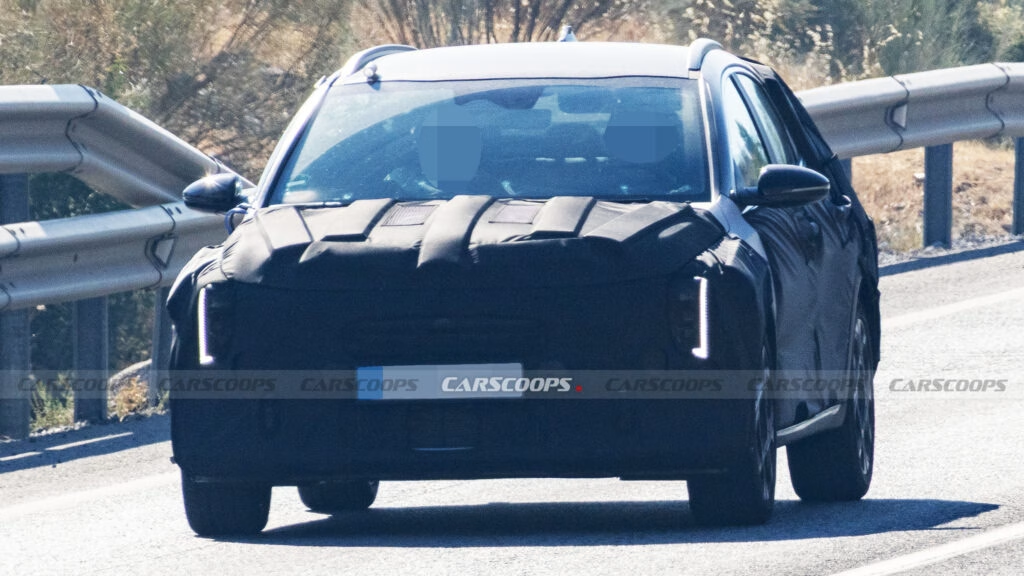What’s Changing With the Next Kia XCeed Facelift?
If you’ve been eyeing the Kia XCeed, you might’ve noticed it’s starting to look a little long in the tooth compared to its newer siblings. Kia’s compact crossover first hit the roads in 2019, and while it got a minor facelift in 2022, it’s now due for a much more dramatic refresh. Spy shots of a heavily camouflaged prototype have surfaced, hinting at a bold redesign that could finally bring the XCeed up to speed with the rest of the Kia family.
So, what’s actually changing? For starters, the front end is getting a serious makeover. Expect vertically stacked LED headlights—a big departure from the current look—paired with a larger grille and reshaped bumper intakes. Even under all that camouflage, the new face is hard to miss. Around back, the taillights are clearly different, suggesting a reworked tailgate and bumper. The profile will likely get new alloy wheels and color options, plus chunkier plastic cladding to amp up the SUV vibe.
Is the XCeed Still Relevant in a World of EVs?
With Kia making headlines for its electric vehicles, you might wonder why they’re still investing in a gasoline-powered model. The answer is simple: demand. While EV sales are growing fast, the majority of buyers—especially in Europe—still want the flexibility and familiarity of internal combustion engines. According to the European Automobile Manufacturers’ Association, hybrids and mild hybrids made up over 25% of new car sales in the EU in 2023, while full EVs accounted for just under 15%. Kia knows it can’t abandon traditional powertrains just yet, especially in a segment as competitive as compact crossovers.
That’s why the XCeed isn’t just sticking around—it’s getting smarter. The upcoming facelift is expected to introduce mild-hybrid gasoline engines, and there’s talk of a plug-in hybrid (PHEV) making a comeback. The 1.6-liter diesel is likely on the chopping block due to stricter emissions rules, and the 1.5-liter gasoline engine could follow. Instead, look for the XCeed to share powertrains with the Hyundai i30, which has already embraced electrified options.
What About the Interior and Tech Upgrades?
Step inside the current XCeed and you’ll find a cabin that’s functional, but not exactly cutting-edge. That’s about to change. The new model is expected to feature a fully digital cockpit, bringing it in line with Kia’s latest offerings. Think larger, crisper displays and a more intuitive infotainment system. Advanced driver assistance systems (ADAS) are also on the way, with features like adaptive cruise control, lane-keeping assist, and upgraded emergency braking. These aren’t just nice-to-haves—they’re quickly becoming must-haves for buyers in this segment.
Kia is also likely to offer more eco-friendly upholstery options, following a broader industry trend toward sustainable materials. It’s a small touch, but it matters for buyers who want to feel good about their purchase beyond just fuel economy.
How Does the XCeed Stack Up Against Rivals?
With the Ford Focus Active bowing out of the market, the XCeed faces stiff competition from the likes of the Mazda CX-30, Toyota C-HR, and Citroen C4. Each of these models brings something unique to the table—Mazda’s premium feel, Toyota’s hybrid tech, Citroen’s quirky design—but the XCeed has carved out a niche as a practical, stylish crossover that doesn’t break the bank.
The upcoming facelift should help it stay competitive, especially as more buyers look for vehicles that blend SUV styling with hatchback agility. By updating its tech, safety features, and powertrains, Kia is betting the XCeed can hold its own even as the market shifts toward electrification.
Why Is Kia Focusing on the XCeed When Other Ceed Variants Are Gone?
Here’s the reality: the rest of the Ceed family—hatchback, estate, and ProCeed—has quietly exited stage left due to declining sales. The XCeed, however, has managed to buck the trend. Its higher ride height, chunkier looks, and crossover appeal have struck a chord with buyers who want something a little different from a traditional hatchback but aren’t ready to go full SUV.
Kia’s decision to double down on the XCeed makes sense. It’s the last Ceed standing, and with a major refresh, it could attract both loyal fans and newcomers who might’ve otherwise looked elsewhere.
When Can You Expect to See the New XCeed?
Mark your calendar for mid-2026. That’s when the revamped XCeed is expected to make its official debut, with production likely continuing in Slovakia. If Kia sticks to its usual playbook, you can expect a gradual rollout across European markets, followed by other regions where the XCeed has found a following.
The big takeaway? The XCeed’s next chapter isn’t about perfection—it’s about smarter adjustments. Start with one change this week, and you’ll likely spot the difference by month’s end. Whether you’re a longtime fan or just car shopping with an open mind, keep an eye on this one—it’s proof that even in a rapidly changing market, there’s still room for a well-timed comeback.

